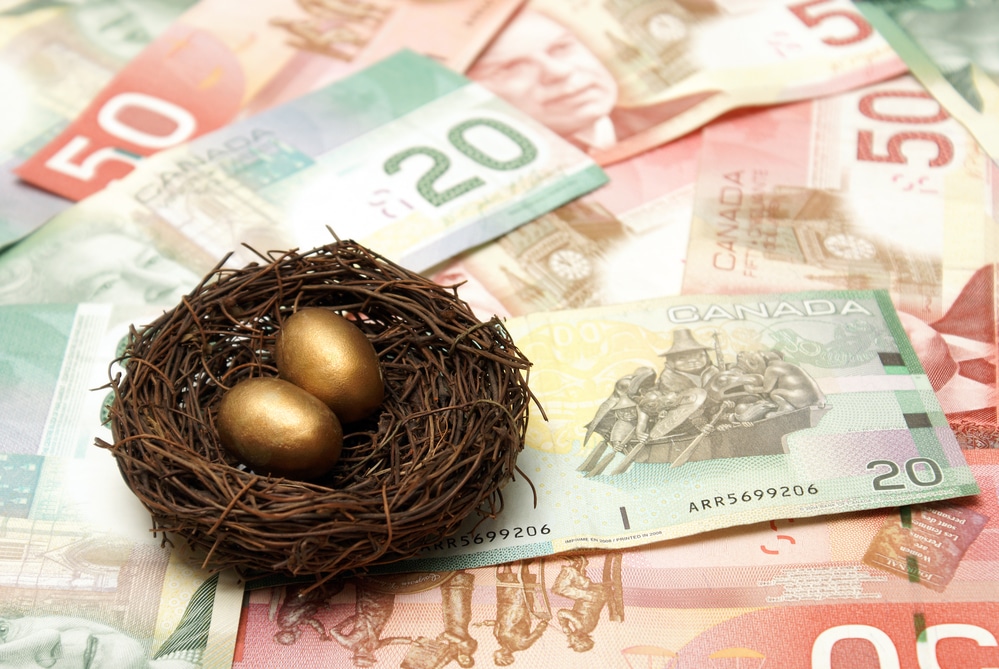You’ve spent years saving for your retirement. Now it’s time to enjoy the benefits of these savings. One option is to convert your savings from an RRSP to a RRIF.
What is a RRIF?
A RRIF is an extension of an RRSP. While your RRSP was used to save for your retirement, a RRIF is used to systematically draw income during your retirement.
Related: RRIFs (Good God Y’all!) What Are They Good For?
Once an RRSP is converted to a RRIF you can no longer make contributions and are required to make minimum annual withdrawals as set out by federal regulations.
The funds you withdraw are taxable and this amount is added to your taxable income for that year.
RRSPs must be converted by the end of the calendar year that you turn age 71 and payments must begin the following year.

How much can I withdraw?
You can withdraw any portion as long as you meet the minimum required withdrawal amount for the year. Review all your sources of retirement income and assess how your RRIF payments will factor into your income needs.
You can take a lump sum payment at the end of each year to increase your tax-deferred growth. Or, for ongoing income needs, take monthly or quarterly payments.
There is nothing to stop you from taking more than the minimum. However, if you do, any excess will be subject to withholding tax at the source. This withholding tax is taken into account when calculating your taxes payable when you file your annual return.
How is the minimum amount calculated?
The amount is determined by your age and the value of your portfolio on January 1 of each year, as established by the Canadian government. You can open a RRIF at any age.
- Before age 71 – RRIF market value x 1 / (90 – your age on January 1)
- After age 71 – RRIF market value x required percentage (see schedule):
| Age Minimum Amount |
| 71 – 7.38%* |
| 72 – 7.48%* |
| 73 – 7.59%* |
| 74 – 7.71%* |
| 75 – 7.85%* |
| 76 – 7.99%* |
| 77 – 8.15%* |
| 78 – 8.33% |
| 79 – 8.53% |
| 80 – 8.75% |
| 81 – 8.99% |
| 82 – 9.27% |
| 83 – 9.58% |
| 84 – 9.93% |
| 85 – 10.33% |
| 86 – 10.79% |
| 87 – 11.33% |
| 88 – 11.96% |
| 89 – 12.71% |
| 90 – 13.62% |
| 91 – 14.73% |
| 92 – 16.12% |
| 93 – 17.92% |
| 94+ – 20.00% |
*Minimum payments from RRIFs established prior to January 1st, 1993 are determined using different percentages.
The mandatory minimum withdrawal does not incur any withholding tax at the time it is withdrawn, which allows you to benefit from the entire amount until tax time.
Related: 5 common myths about RRSPs
To reduce the withdrawal amount you have to take, you can use your younger spouse’s age as the base for the minimum amount calculation.
Why would I withdraw my money before age 72?
There are some circumstances where early withdrawals can be beneficial:
- A person who is unemployed or retires early may have a period of time of needing income before government or company pensions begin.
- Someone may elect to take CPP and OAS payments at a later age.
- A person who wants to reduce their RRIF balance to minimize required payments for tax purposes.
Financial institutions often charge a fee (about $25) to de-register RRSP money, which can be costly if you make regular withdrawals. RRIFs should never have withdrawal fees.
You can transfer investments “in kind” to a non-registered account or TFSA.
What investments can I hold in a RRIF?
RRIFs allow you to control how your money is invested. They offer the same investment options and tax-deferred growth as your RRSP. The investments can be transferred directly. They don’t need to be liquidated.
Allow for the flexibility of short-term funds to withdraw annually (e.g. cash, GIC’s or short term bonds) and leave growth investments intact.
Related: Breaking up isn’t hard to do – A guide to transferring your RRSP
Equities should be sold by choice (e.g. taking profits) rather than by necessity because you need to replenish your cash flow.
Plan to review your withdrawal amount and asset mix at least once a year.
Tax planning strategies
Opening a RRIF at 65 or older offers the option of income splitting (up to half of the withdrawal) with your spouse, which can help reduce OAS clawbacks.
Some people create a small RRIF at age 65 in order to make an annual $2000 withdrawal, which would qualify for the Pension Tax Credit.
What happens when I die?
Naming a beneficiary ensures that the RRIF is excluded from the calculation of estate probate fees, but the entire remaining value of the RRIF becomes taxable income to the estate unless you have a spouse, or children or grandchildren under the age of 18 (or child with a disability) who were financially dependent on you.
A spouse can transfer the funds to their own RRSP or RRIF. Financially dependent children can purchase a term annuity (to age 18) or transfer to their own RRSP.
Related: Whatever you do, don’t retire alone (and other helpful advice)
Consider naming your spouse “successor annuitant” of your RRIF. This designation allows RRIF payments to continue to go to the surviving spouse without interruption and minimizes estate administration costs and taxes.